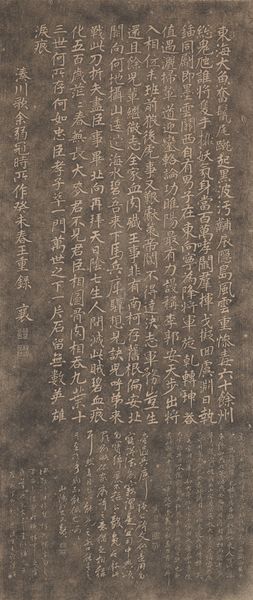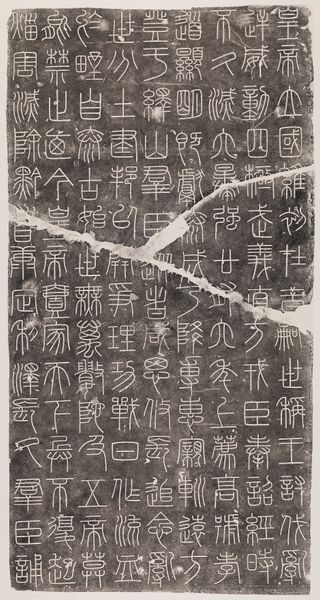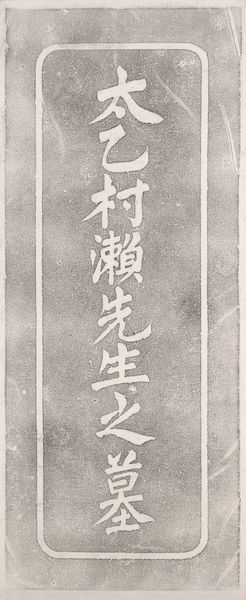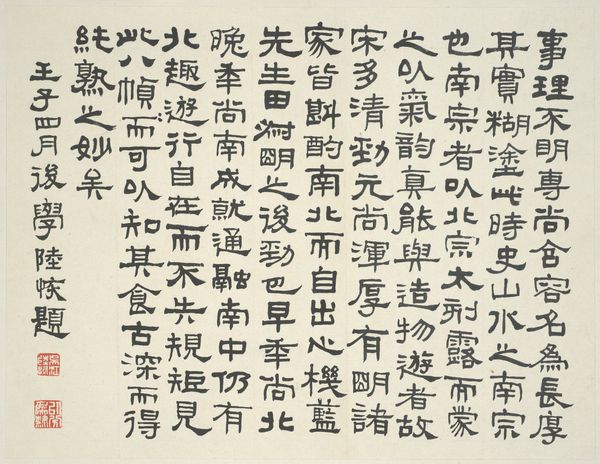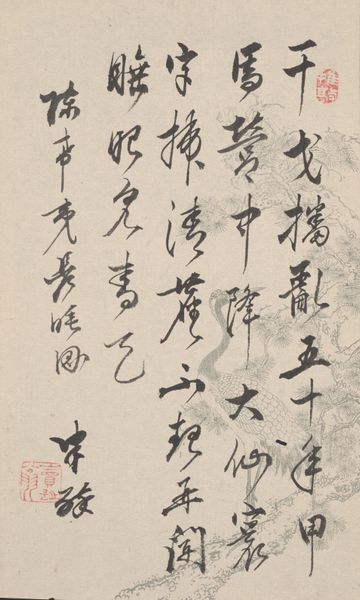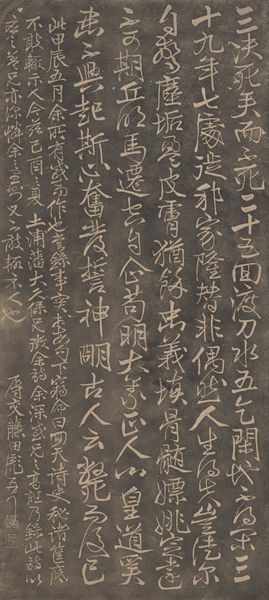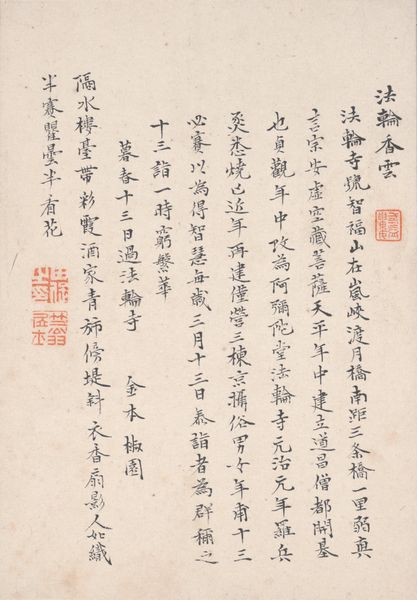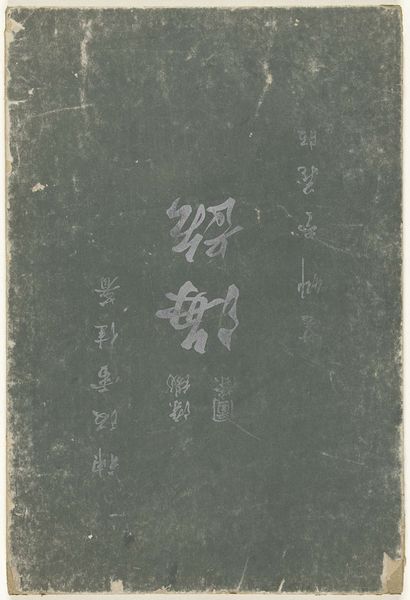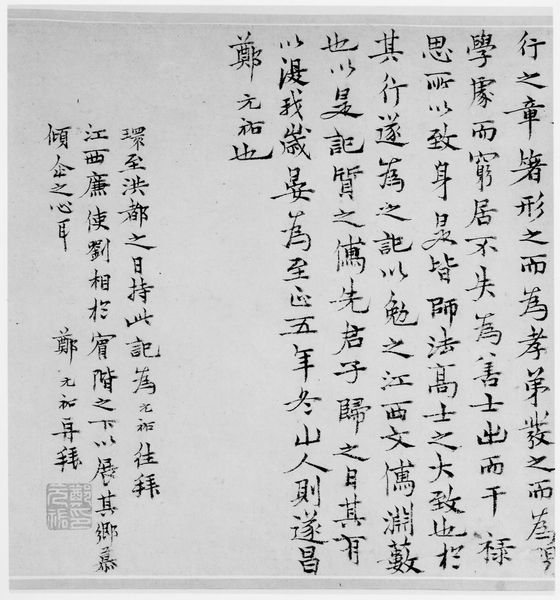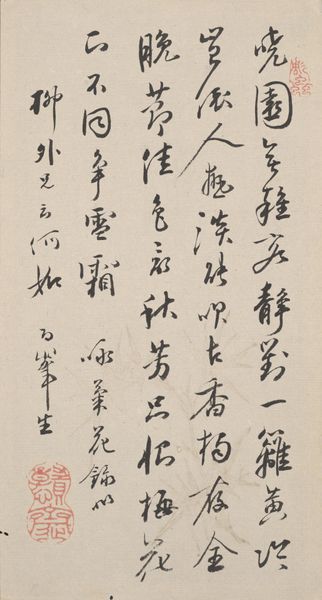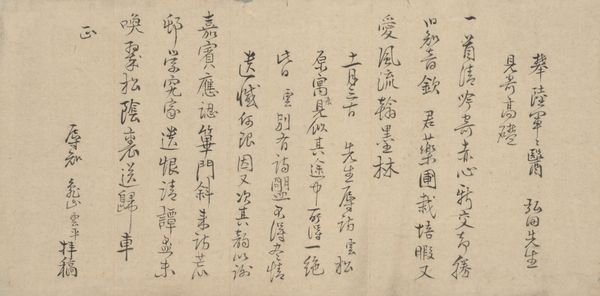
drawing, print, paper, ink-on-paper, typography, hanging-scroll, ink
#
drawing
#
script typography
#
hand-lettering
# print
#
asian-art
#
hand drawn type
#
hand lettering
#
japan
#
paper
#
ink-on-paper
#
typography
#
hanging-scroll
#
ink
#
calligraphy
Dimensions: 40 7/16 × 16 5/8 in. (102.71 × 42.23 cm) (image)69 1/4 × 20 1/8 in. (175.9 × 51.12 cm) (mount, without roller)
Copyright: Public Domain
Curator: Let's discuss "Grave Inscription" by Murase Taiitsu, created around 1881. It’s a hanging scroll, rendered in ink on paper. Editor: Initially, I am struck by its texture, and the labor implied in the work; the rubbing reveals every imperfection. It communicates loss and memory through the act of its creation, a physical trace of inscription and transfer. Curator: I concur; there’s an interesting tension between ephemerality and permanence in the stark contrast of the black ink against the paper. The artist skillfully employs varied stroke weights and spacing. Consider the placement of each character within the whole. The formal elements convey an almost architectural solidity. Editor: Yes, and what was the method in reproducing the calligraphy? You have the texture from rubbing, but what does that imply about access, and making something public? Given the tomb inscription source and nature of epigraphy, I immediately think of labor; someone created the inscription, then this print captures the texture of it. The process of creating the rubbing itself embodies ritual. It’s not simply about transferring an image; it’s about active engagement and documentation. Curator: Precisely! Semiotically, the calligraphy itself presents a codified system. Notice the composition and flow of each character, directing the viewer's gaze downward, almost leading to contemplation and quiet reflection. This piece operates beyond mere communication. Editor: Right, this speaks volumes about not just high art, but about craftsmanship as memorial. The means of production really tie the creation of the image and what it stands for; as material gradually disappearing into a printed form. This isn't simply a picture, it's the creation of memory. Curator: I see it too; together these aesthetic choices produce a somber yet reverential tone. Thank you, this has certainly given me another way of looking at this artifact. Editor: It highlights art making that brings together labor, time, and materiality as central to an experience that touches history itself.
Comments
No comments
Be the first to comment and join the conversation on the ultimate creative platform.
